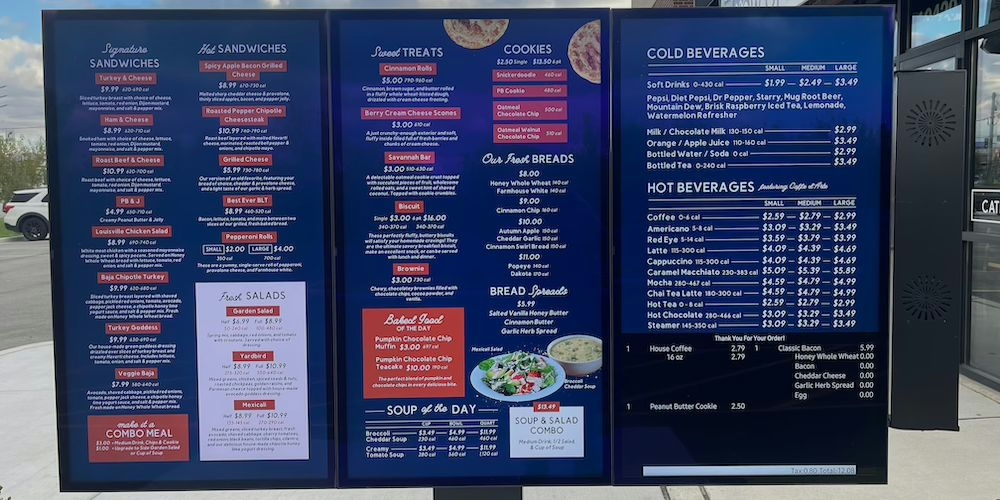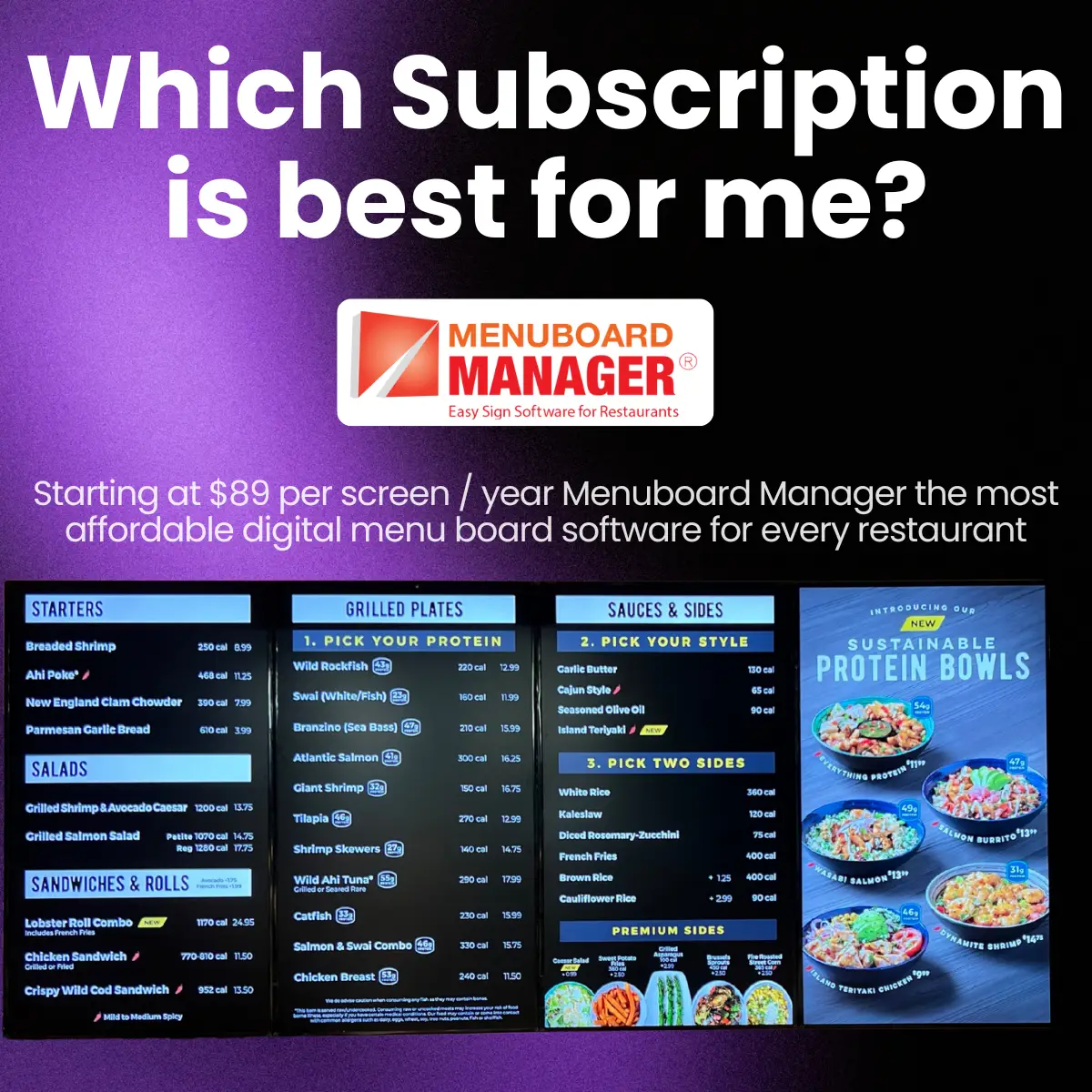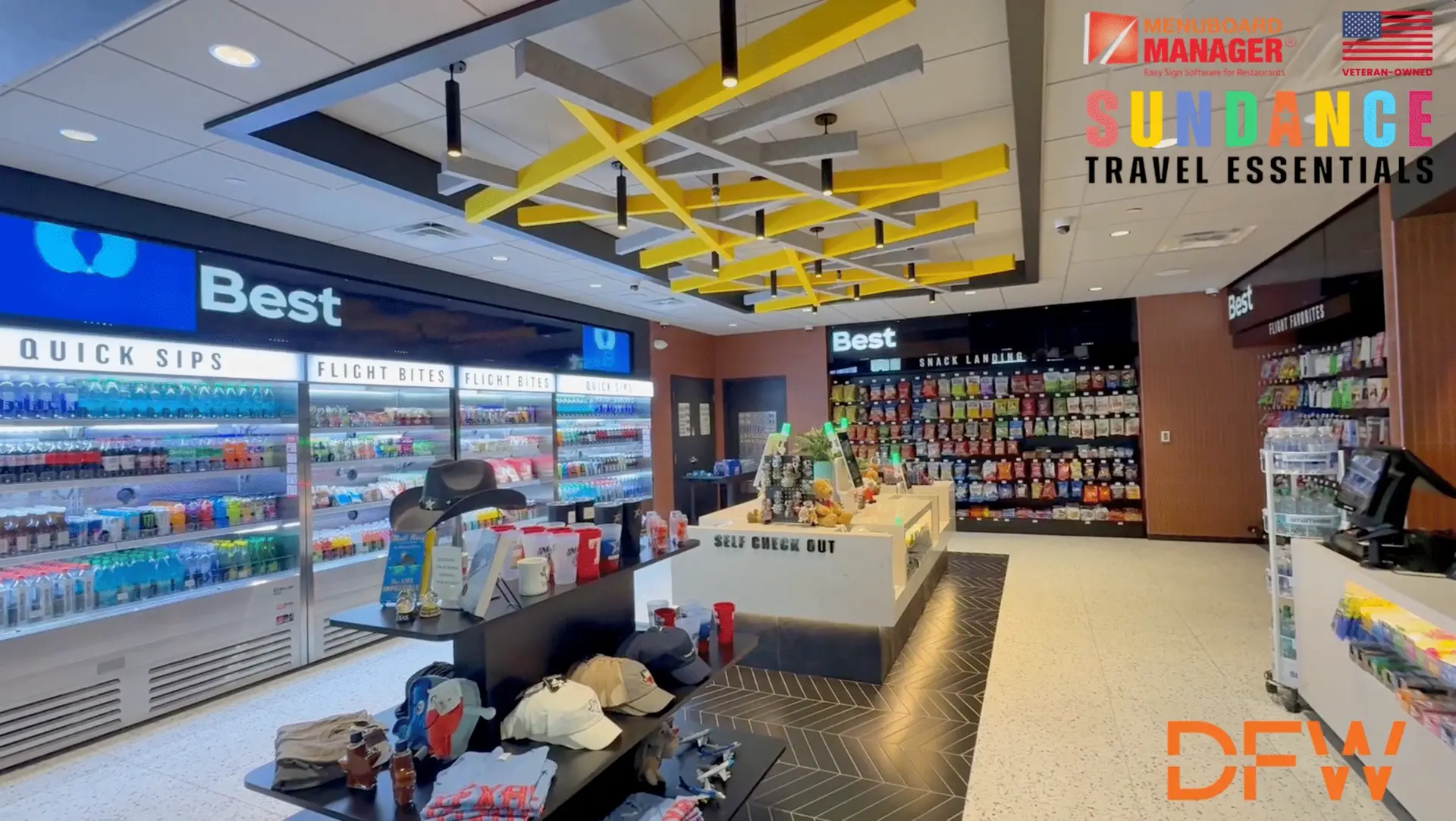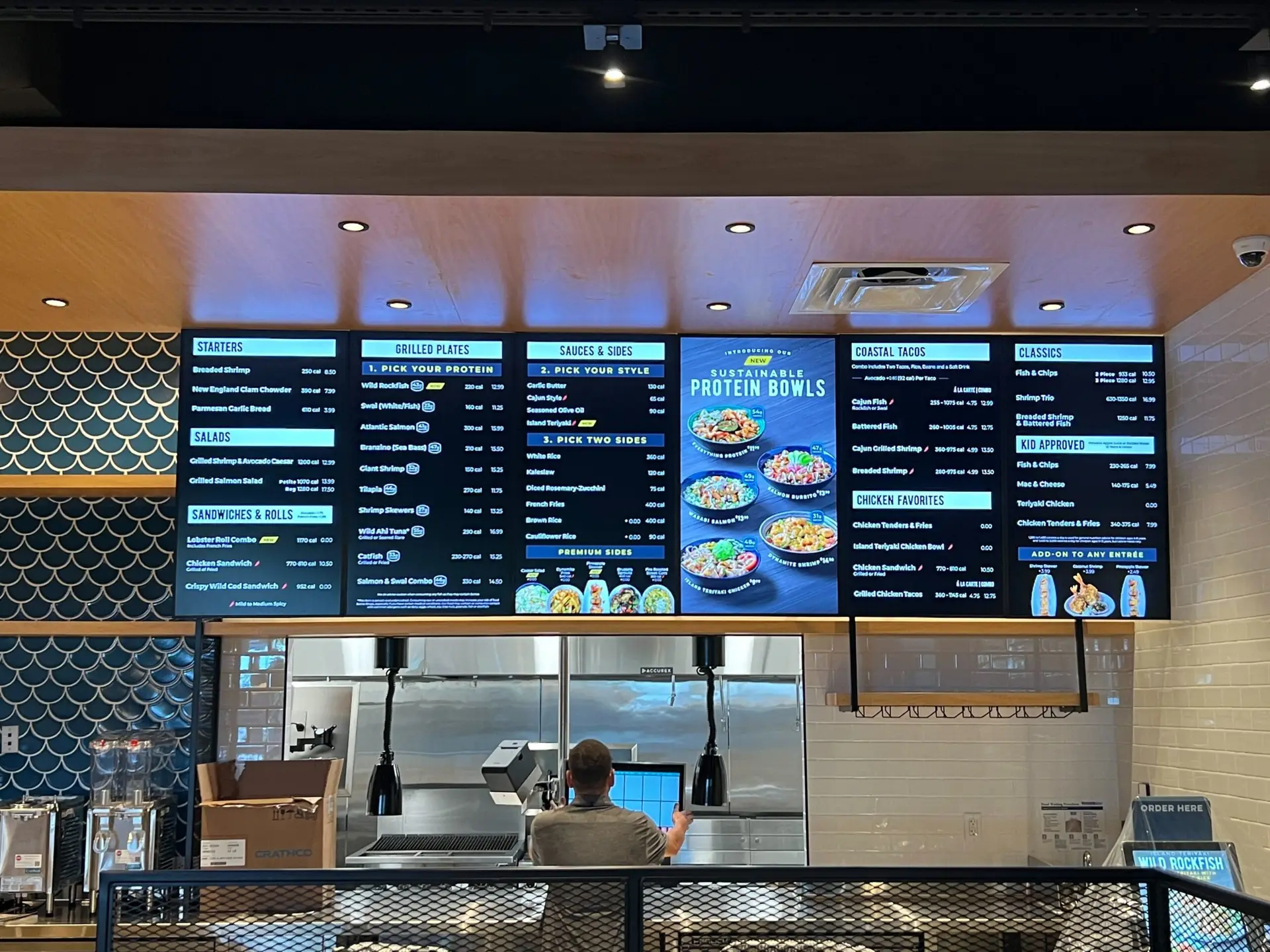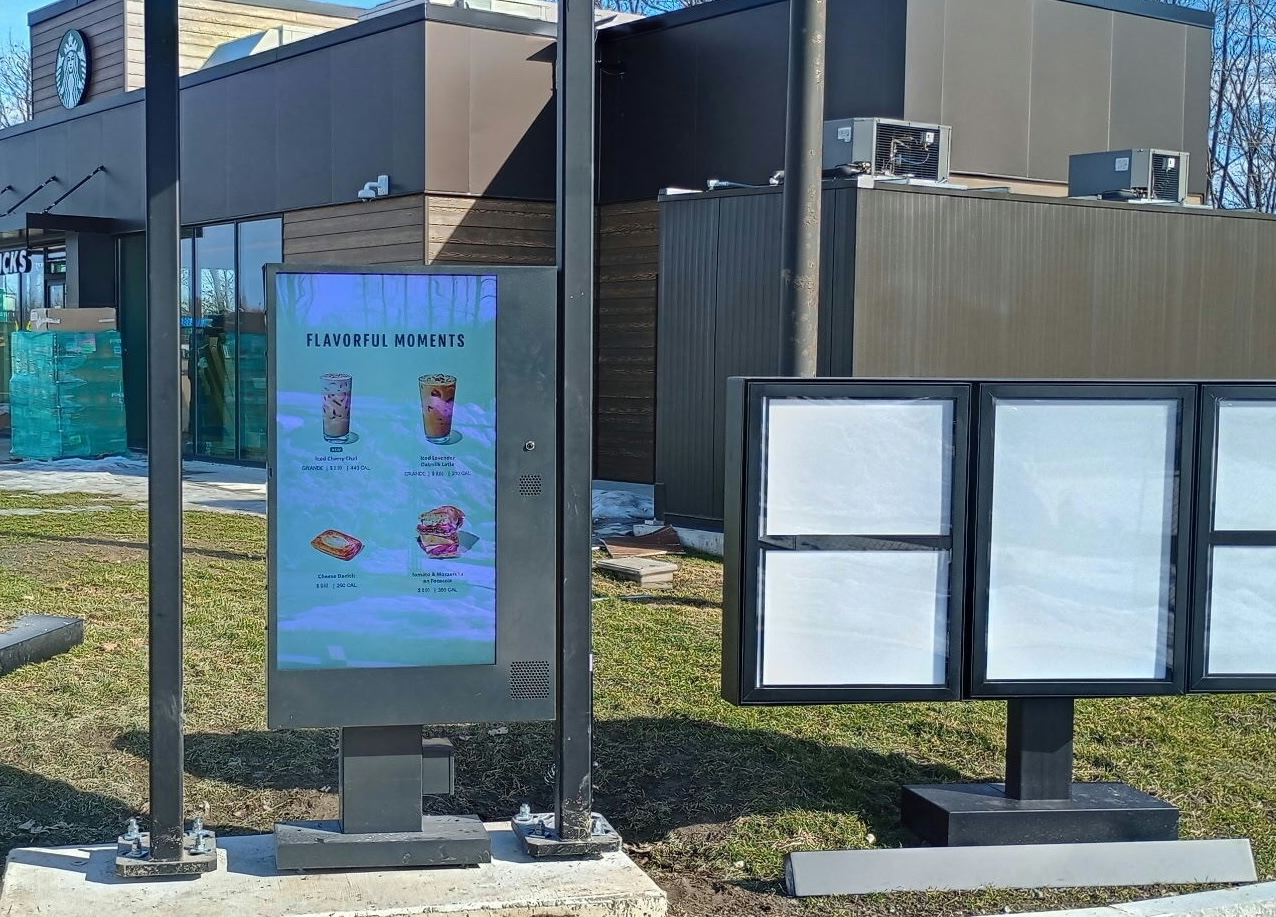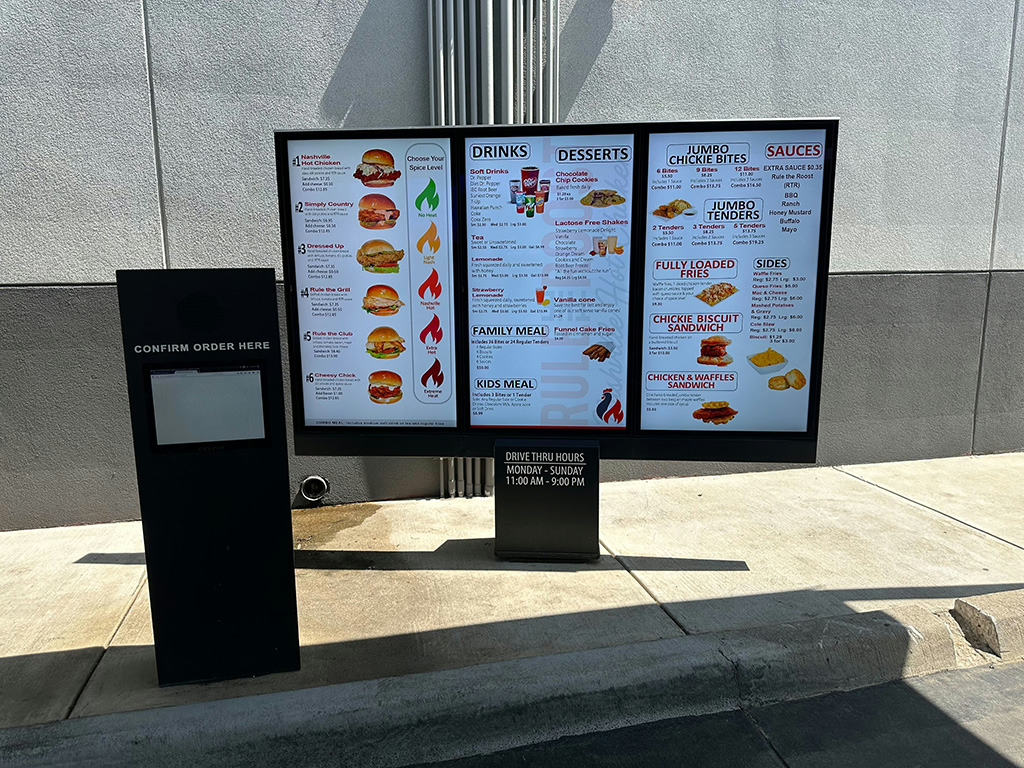In today’s fast-paced quick serve restaurant, the integration of technology has become a key element in enhancing customer experience and boosting efficiency. Among the most innovative tools is the digital menu board, which has evolved far beyond just being a screen displaying menu items. Restaurants are leveraging this versatile technology in creative ways to attract customers, streamline operations,
and maximize profits.
Here’s how:
Dynamic Menu Adjustments
Gone are the days of printed menus that couldn’t keep up with changes. Restaurants
now use digital menu boards to adjust offerings in real-time. For example:
Time-based menus: Switching between breakfast, lunch, and dinner menus
automatically at set times.
• Promotional pop-ups: Highlighting daily specials, happy hour deals, or limited-time items instantly.
Time-based menus: Switching between breakfast, lunch, and dinner menus
automatically at set times.
• Seasonal updates: Incorporating holiday-themed menus and promotions without the need for reprints.
This flexibility not only saves costs but also ensures relevance and freshness in offerings.
2. Eye-Catching Visuals
Digital menu boards allow restaurants to showcase their dishes with high-definition videos and animations. For example:
• Appetizing food videos: Looped clips of sizzling steaks, bubbling pizzas, or frothy cappuccinos captivate customers and boost impulse buying
• Interactive displays: Some restaurants use touch-screen digital boards to let customers explore detailed descriptions, nutritional information, or even preparation videos.
These vivid presentations entice diners and help establish trust in the quality of food.
These vivid presentations entice diners and help establish trust in the quality of food.• Interactive displays: Some restaurants use touch-screen digital boards to let customers explore detailed These vivid presentations entice diners and help establish trust in the quality of food.
These vivid presentations entice diners and help establish trust in the quality of food.
3. Upselling and Cross-Selling Opportunities
Smart digital menu boards are being programmed with AI or customer behavior analytics to suggest upsells and cross-sells. For example:
• When a customer selects a burger, the menu might suggest pairing it with fries and a drink at a discounted price.
• Highlighting high-margin items or promoting add-ons like extra cheese or dessert can subtly encourage customers to spend more.
This strategy has proven effective in increasing average ticket sizes.
4. Incorporating Customer Interaction
Restaurants are engaging customers with digital menu boards by adding an interactive element. Examples include:
• Gamification: Some restaurants use gamified menus that offer discounts or freebies if customers interact with on-screen challenges or quizzes.
• Social media integration: Displaying live feeds of customer posts, hashtags, or reviews, fostering a sense of community and encouraging diners to share their experiences online.
This approach not only entertains but also strengthens customer loyalty.
5. Localization and Personalization
Many restaurants, especially chains, use digital menu boards to tailor content based on location and audience preferences. Examples include:
• Geographical targeting: Displaying menus in multiple languages or featuring region-specific items.
• Personalized promotions: Leveraging loyalty programs to offer deals on customers’ favorite meals when they check in via apps or kiosks..
This targeted approach ensures a more inclusive and engaging experience for diverse diners.
6. Real-Time Updates During Peak Times
For restaurants managing high foot traffic, digital boards streamline operations by managing expectations. For example:
• Order Confirmation: Showing real-time updates on order statuses.
• Order Confirmation: Showing real-time updates on order statuses.
This transparency helps reduce errors, food waste, and frustration improving the overall customer experience.
7. Sustainability Messaging
Restaurants committed to eco-friendly practices are using digital menu boards to share their sustainability stories. For instance:
• Highlighting locally sourced ingredients or farm-to-table practices.
• Sharing energy-saving initiatives and other green efforts.
This resonates with environmentally conscious customers and helps build a positive brand image
8. Entertainment and Ambiance Enhancement
Digital menu boards are also being used creatively to enhance the atmosphere in restaurants:
Interactive art displays: Displaying themed animations or visuals to match the restaurant’s vibe.
• Event promotion: Advertising upcoming events, live music nights, or special tasting menus in engaging formats.
By serving dual purposes as functional tools and decor, digital boards add to the dining experience.
Also Read About: How Digital Menu Boards Work for Restaurants
The Future of Digital Menu Boards
As technology continues to evolve, digital menu boards will become even smarter and more innovative. Integrating AI, augmented reality, and customer data analytics will enable restaurants to offer hyper-personalized experiences while staying ahead in a competitive market
For restaurant owners, investing in digital menu signage is no longer just a trend—it’s a necessity. With the right strategy, these boards can become powerful tools to boost sales, enhance customer satisfaction, and build a unique brand identity.



